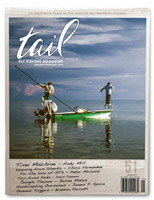The Atlantic striped bass, beloved by recreational anglers and valuable to commercial fishermen, patrols the East Coast from the St. Lawrence River in Canada to the St. Johns River in Florida.
Increased fishing pressure and degradation and loss of habitat in the 1970s resulted in a collapse of striped bass stock in the 1980s, but a moratorium on striper fishing, new legislation, and a new management program all contributed to an apparent striper rebound by the late 1990s.
Striped bass thrived for nearly a decade–but once again, the population is in serious decline. Eager to offset the decline, East Coast states have stepped in with various proposals aimed at reducing striper mortality–particularly the mortality of the “spawning stock biomass”: the weight of females ages four years and older in the striper population. Despite these efforts, the Atlantic striped bass population appears to be in continued decline.
How did we get here? What can we do to save the beloved striper?
 America’s Saltwater Sweetheart
America’s Saltwater Sweetheart
For better or worse, the humble striper remains a favorite of the hook-and-line recreational angler. According to an article in the February 2019 issue of On the Water magazine, reporting on a meeting of the Atlantic States Marine Fisheries Commission’s (ASMFC) Striped Bass Management Board, recreational anglers were responsible for 90 percent of the coastal removal of striped bass in 2017: In real numbers, “recreational fishermen are estimated to have caught 41.2 million striped bass in 2017. They kept 2.9 million and released 38.2 million. Of those 38.2 million released, it is estimated that 3.4 million did not survive.” Yes, you read that correctly: The ASMFC estimates that in 2017, the number of fish that died after being handled by recreational anglers and then returned to the water exceeded the number that anglers took home with them.
Could training enable recreational anglers to reduce catch-and-release mortality? Yes, says Captain Dave Cornell, who guides along Massachusetts’ South Coast: “Landing a fish quickly, with a minimum of handling at the boat, is very important.” Pinch down those barbs, says Cornell, and have pliers at the ready. “Fish that have hooks in their gills and may be bleeding are best unhooked by opening the gill and going in from behind, where the hook is often easier to access. Many anglers don’t know this. Cutting off the fly after freeing it from the gill plates can minimize damage to the gill.”
Dr. Gary Nelson of the Massachusetts Division of Marine Fisheries (MDMF) offers a qualified agreement that changing recreational anglers’ behavior could greatly affect rates of fish mortality: “Yes and no. I think many recreational anglers are aware that circle hooks are a good alternative to J hooks for decreasing hooking mortality.” But many anglers Nelson knows don’t like fishing with circle hooks, which don’t have to be set like J hooks. Anglers enjoy “the thrill of setting a hook,” Nelson continues. The MDMF “has been promoting the use of circle hooks to reduce hooking mortality since I started back in 2001. As of 2020, use of in-line circle hooks when fishing for striped bass using natural baits is a requirement.”
What one thing should recreational anglers know about fish mortality? Although Nelson’s views do not represent those of the MDMF, he himself insists, “Playing time after hooking a fish contributes significantly to hooking mortality.” Lactic acid, a byproduct of vigorous exercise, builds to toxic levels in the exhausted fish. To improve your quarry’s chances of survival, Nelson continues, “reel in the fish as quickly as possible.”
 Commercial Fishing
Commercial Fishing
Striped bass are also caught commercially with gill nets, pound nets, haul seines, and hook and line. In 2017 the commercial fishing industry harvested nearly five million pounds of striped bass; more than 60 percent of that haul came out of the Chesapeake Bay. Already this is a heavily regulated fishery; nevertheless, at an October 2019 meeting the ASMFC’s Atlantic Striped Bass Management Board approved an 18 percent cut in commercial and recreational striper harvests for 2020.
 Environmental Change
Environmental Change
Striped bass spend most of their adult lives in coastal estuaries or the ocean, migrating south in the winter and returning to rivers to spawn in the spring. Although the Hudson and Delaware Rivers remain important spawning grounds, the truth is that most of the striper spawning stock comes out of the venerable Chesapeake Bay. And striper stakeholders fear that the Bay is seriously threatened: Both urban development and farming endanger the seagrasses that act as striper nurseries; the forage fish (like anchovies and menhaden) that striped bass depend upon for sustenance appear themselves to be in decline; and poor water quality and warmer water (with lower oxygen levels) have led to a higher incidence of hypoxia and diseases like mycobacteriosis, which is currently leaving external lesions on Chesapeake Bay striped bass.
Is the decline in fish habitat a reflection of climate change or of pollution of local waterways? Very probably both, argues Nelson. In the all-important Chesapeake Bay, he says, low-oxygen (anoxic) conditions develop during the summer as a result of high water temperatures and “agricultural runoff that promotes growth of bacteria that use oxygen.” Striped bass do what they can to avoid low-oxygen habitats. They are therefore “squeezed into habitats that are sub-optimal for their survival.” From 2004 to 2010, the Chesapeake Bay produced fewer young striped bass–likely, says Nelson, as a result of climate change: “Good survival occurs when spring weather is wet and cool. We are now observing northward shifts in fish distribution along the Atlantic Coast as water temperatures increase. In the Gulf of Maine, water temperature is rising faster than any water body in the world, and it is believed that the collapse of Gulf of Maine northern shrimp is due to increasing temperatures.” And again, where prey species go, predator species soon follow.
 Striper to Seal to Shark
Striper to Seal to Shark
When Cape Cod’s striped bass fans look for the culprits responsible for the striper decline, their eyes turn in an unexpected direction: “Along with climate change, overfishing, and habitat loss,” says guide Dave Cornell, “seals are a huge factor in striper mortality. Buzzards Bay isn’t as affected as Cape Cod, but we have a growing seal population near Penikese Island.” And many residents fear that right behind seals come sharks.
The seal question “can only be answered by amending the Marine Mammal Protection Act,” says Dean Clark of the nonprofit conservation group Stripers Forever Massachusetts. “Without ecosystem-based management and the studies to support the same,” it is difficult to determine the full effect of the seal population on the wild striped bass population. Fisheries biologist Nelson concurs: Yes, striped bass are “found occasionally in seals’ stomachs, but there is no estimate of numbers consumed,” and “the impact of seal predation is likely not as great” as many assume.
How significant a factor is striper predation by white and thresher sharks? Nelson does not dismiss the possibility, noting that juvenile sharks are indeed fish-eaters. Guide, fly angler, and marine researcher Zachary Whitener says, “I’m sure that seals eat a large amount of striped bass. But I’m also sure that humans kill many, many more fish and have had–and are having–a much greater effect on the Atlantic ecosystem as a whole than seals. We have more control over how we manage fish than how seals manage fish.” In the final analysis, Dean Clark reminds us, an emotional reaction to striper decline “serves no one well.”
 Poaching
Poaching
Just how big a role does poaching play in striper decline? The reality is that, despite uniformed and plainclothes policing by environmental officers, striped bass poaching is, in Nelson’s words, “ubiquitous.” In Massachusetts, he says, poaching “occurs frequently near urban areas like Lynn and Lawrence on the Merrimack River.” Recently the Cape Cod Canal has seen an uptick in poaching, which is unfortunately as difficult to curb as it is to quantify.
Poaching, says Stripers Forever’s Clark, “has more of a sociological effect than a species population effect. The poachers’ disrespect for the welfare of the species and their disregard for the rules creates an ethos that makes it difficult for the general public to understand and support regulations designed to protect the integrity of striped bass.” Dave Cornell insists that publicized poaching arrests may be common but unfortunately represent just “the tip of the iceberg.”
 Aquaculture
Aquaculture
So do we throw in the towel and accept the inevitable decline of the Atlantic striped bass? Not so fast, say stakeholders. Consider, for example, aquaculture: In 2005, almost 60 percent of all striped bass sold in the United States were grown in an aquaculture operation. In the Chesapeake Bay region, aquaculture supplies readily available seafood at the same time that it reduces pressure on wild striped bass stock and the species on which they prey.
Should aquaculture be the sole source of commercially sold bass? Dean Clark answers, “Yes–but not for the reasons that you might think. Historically striped bass were sought only as a commercial food fish. Their value to society was initially established on a dollars-per-pound-at-market basis. Only recently have stripers become a significant player in the recreational market economy, and this has created a conflict between opposing sectors.” Commercial interests maximize the value of striped bass when they maximize the harvest. For recreational anglers, the opposite is true: “The more and higher quality fish that are alive and thus potentially catchable, the more valuable the striper fishery is,” explains Clark. Fisheries management plans have so far striven to satisfy both constituent groups–although “a voting majority of the regulators are commercially biased. It is a lot like having the foxes in charge of the welfare of the chickens.”
Designating striped bass as a recreation-only species “like trout, deer, and waterfowl” would alleviate the pressure that fisheries management officials get from commercial harvesting interests, says Clark, enabling regulators to “put the welfare of the stripers ahead of those wishing to exploit them. Conservation will replace exploitation, so yes–wild striped bass should not be harvested for commercial purposes.”
Given the strength of the commercial fishing lobby in many East Coast states, regulators are unlikely to outlaw traditional rod-and-reel commercial striper fishing. Aquaculture may be able to put a striper/white bass hybrid on the market, but the public will still demand wild fish. Many stakeholders agree with Dave Cornell that commercial fishing interests and recreational anglers can and should co-exist–and that fishery regulations need to strive for a balance between competing interests.
 Whither Go Bass
Whither Go Bass
Regulators have put in place an Atlantic striped bass management plan that reduces harvest quotas and establishes size limits for both commercial and recreational interests. Is this the best way to turn around striper population decline? Should the Eastern Seaboard set a one-size-fits-all limit to promote public awareness and avoid confusion?
Dean Clark suggests that size limits obscure the real issue, which should be “management philosophy and which interest group is driving the bus. Under the guidance of the commercially biased ASMFC,” Clark argues, “the quality and size of the fishery has continued to shrink over the past ten-plus years. We should be asking why. We shouldn’t be debating how big a striper should be to keep. We should be asking why the ASMFC has allowed commercial by-catch to go unreported, not prioritized the welfare of the fish, and catered to a relatively small group of commercial fishermen while ignoring the conservation demands of the many millions of recreational fishermen. Getting answers to these questions is far more important than arguing over harvesting equivalencies.”
Nelson believes that standardizing regulations across all concerned states would help the Atlantic striper fishery. “Once spawning adults leave the Chesapeake Bay in the spring,” he explains, “the only fish remaining are small fish–smaller than 25 inches and mostly male. If Maryland and Virginia set the same minimum size requirement as Massachusetts, recreational anglers could keep very few fish.” He suggests that perhaps states with reciprocity agreements–that is, states in which anglers with valid saltwater fishing licenses may cross state lines while fishing, as in Connecticut, Rhode Island, Massachusetts, and New Hampshire–should consider coordinating their regulations to avoid angler confusion.
Slot limits protect larger bass because most striped bass over 30 pounds are breeding females. (According to the Massachusetts Division of Marine Fisheries, a 12-pound female can produce about 850,000 eggs, and a 55-pound female can produce more than 4,000,000 eggs.) In addition to slot limits, current regulations target recreational discard behavior: how to properly catch, handle, and release striped bass. So circle hooks and non-lethal handling devices like BogaGrips and landing nets are in–and gaffing is essentially out.
Setting aside “who is most to blame,” the expert stakeholders appear to agree that the threats to the Eastern Seaboard’s striped bass fishery are real and many–and resuscitating the fishery therefore requires a multifaceted approach. For example, climate change is one serious threat, resulting in significant loss of habitat and adversely affecting fish distribution. But “thanks to the Clean Water Act and other national legislation as well as a decline in industry,” remarks Zachary Whitener, “our local waters in Maine are many times cleaner than they were 50 years ago.” So we can indeed have a positive and lasting impact on the environment. But Clean Water Act gains in Maine and across the country are threatened every four years, when conservation becomes a political football.
“I think that there are many, many ways that climate change can manifest itself regarding habitat and striped bass,” says Whitener, “but as a species stripers exhibit a wide variety of life history and behaviors, inhabiting a wide variety of habitats, hedging the species as a whole from losing its ecological niches.” That’s the good news. But unfortunately, “we don’t know how prey relationships or migrations will change,” and those unknowns are “the most unsettling aspect of climate change.”
We have examined recreational discard mortality rates for Atlantic striped bass; the saltwater fly angler quite naturally wonders what these rates might mean for tarpon, marlin, bonefish, and steelhead. Is the gamefish dragged over the gunwale for a selfie being faithfully released back into the water only to die a couple of days later?
The truth is that we have more questions than answers. But all those who care about saltwater gamefish–and in particular the Atlantic striped bass–should be engaged in finding longterm solutions that result in healthy, sustainable fisheries for the next generation of commercial and recreational anglers.
Bio: A lifelong fly angler, Mark White lives on the South Coast of Massachusetts, where he works as a physician assistant in the field of neurosurgery. You can visit his website at southcoastflyfisher.com.
READ MORE ABOUT STRIPED BASS:
 SUBSCRIBE TO TAIL FLY FISHING MAGAZINE
SUBSCRIBE TO TAIL FLY FISHING MAGAZINE
SALTWATER FLY FISHING


